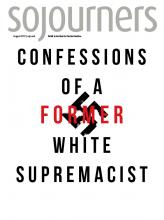TWO WHITE TEENAGERS were recently convicted of spraying racist graffiti on a historic black school in northern Virginia. Their somewhat unusual sentence: Read from a list of 35 books, one a month for a year, and submit a report on all 12 to their parole officers. The booklist included Cry the Beloved Country, by Alan Paton,To Kill a Mockingbird, by Harper Lee, I Know Why the Caged Bird Sings, by Maya Angelou, Night, by Elie Wiesel, and other classics.
The remarkable feature of this sentence was how it clashed conceptually with the customary default question that suffuses our judicial system: How long a prison sentence does the crime deserve?
A strange mathematics is at work in our criminal justice system: For every crime, a matching time in prison. Translating the crime of racist graffiti into reading books that might reform the minds of two teenagers makes a certain rational match with the crime. Putting them in prison for five years is no match at all.
Read the Full Article

